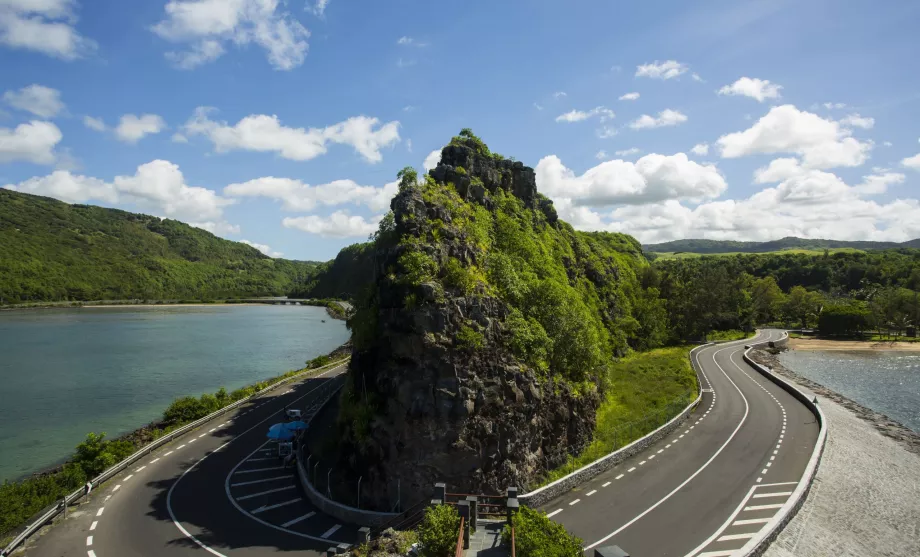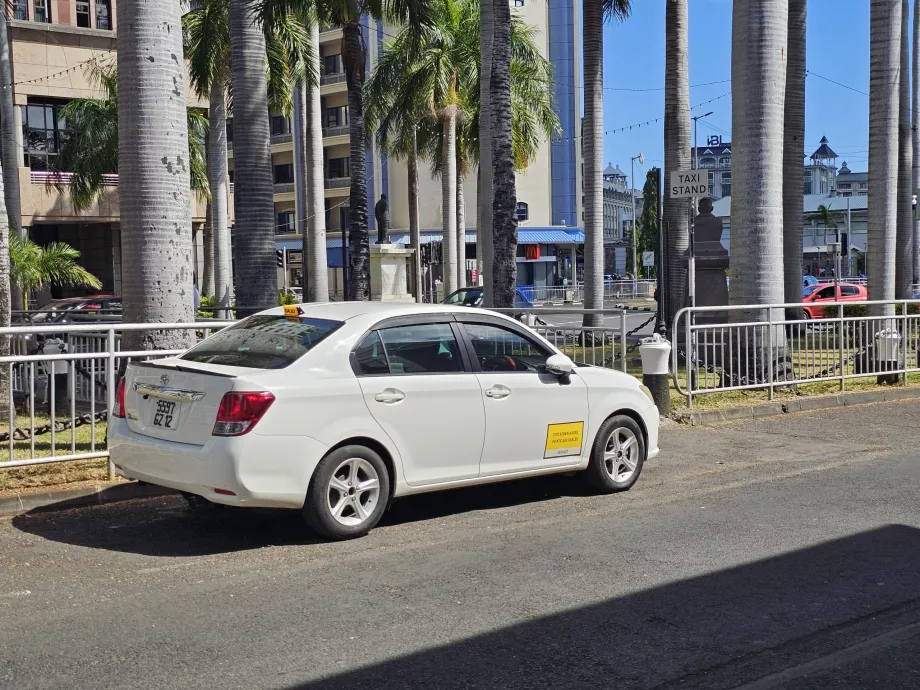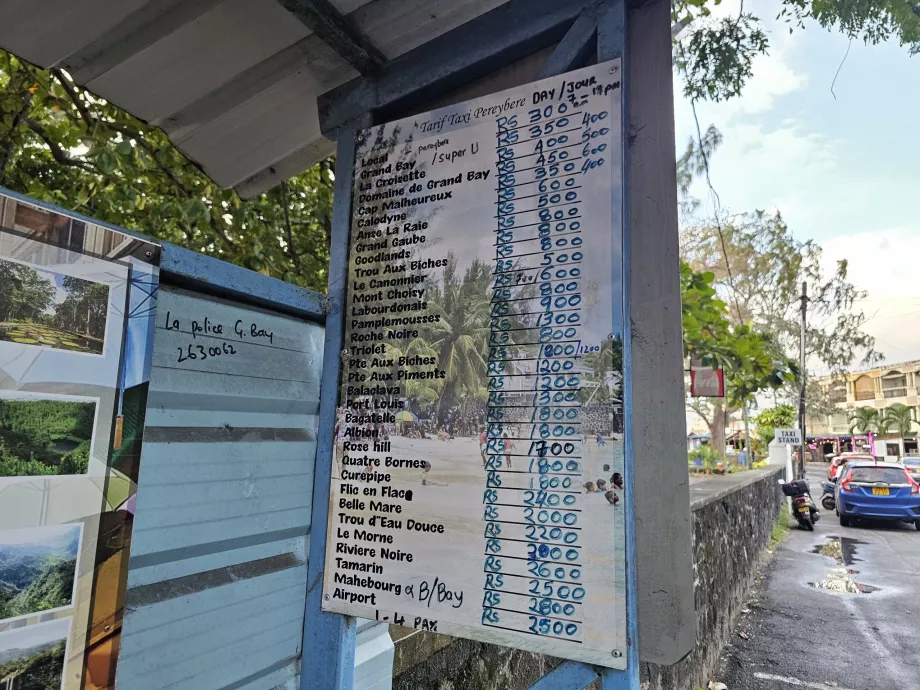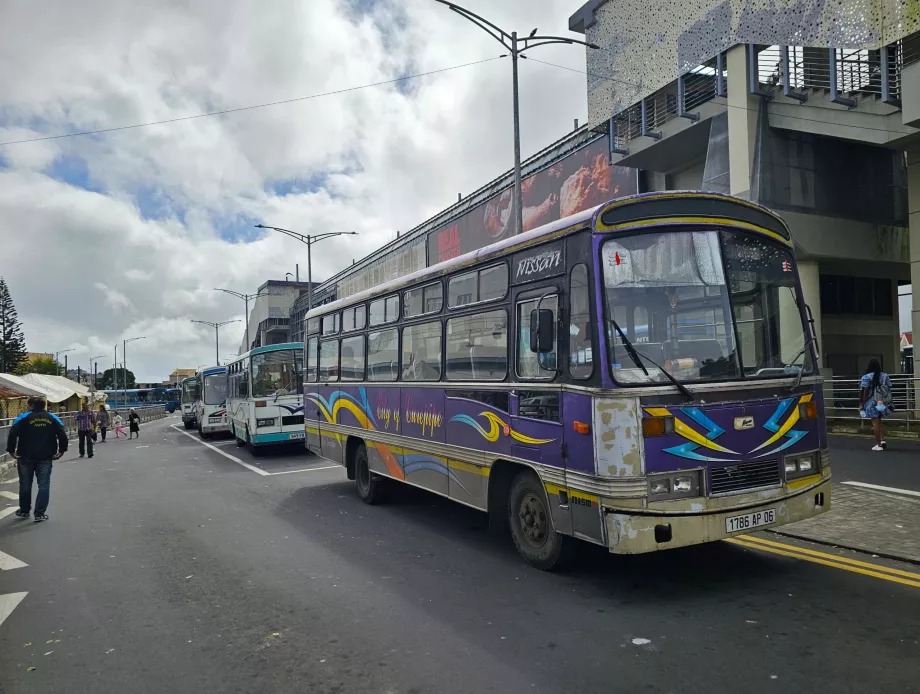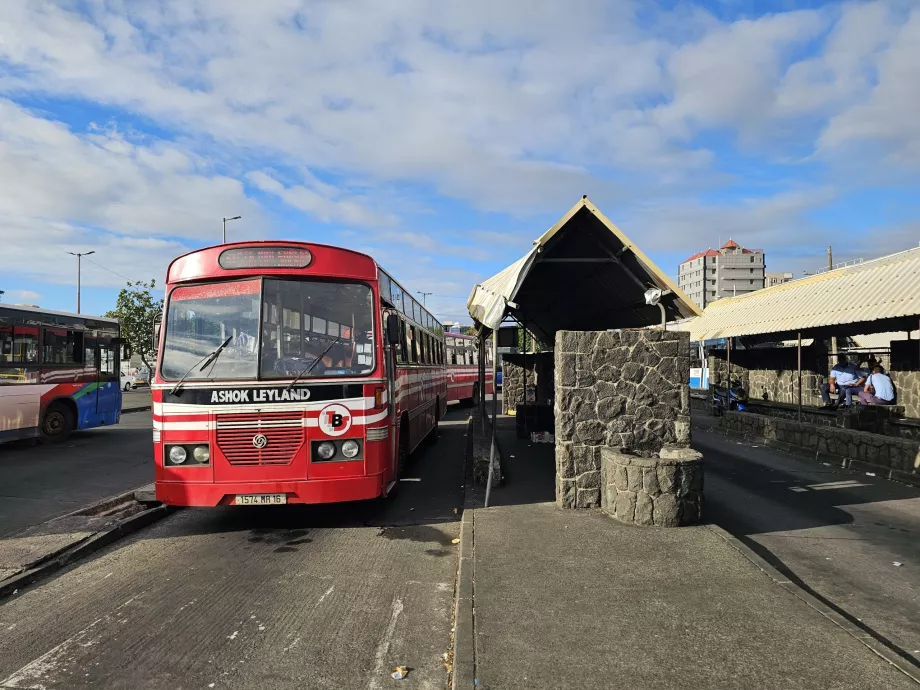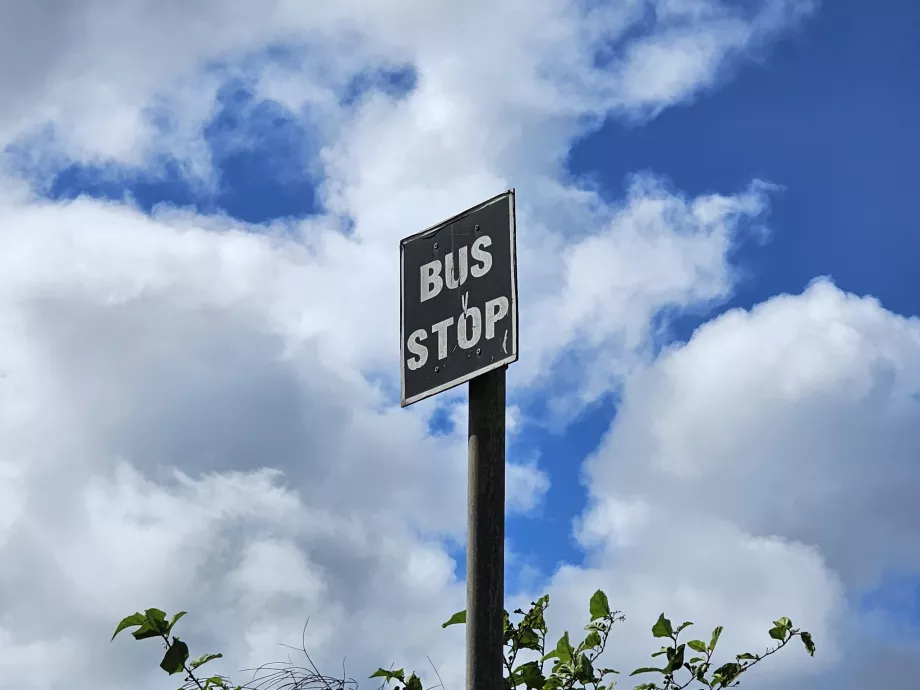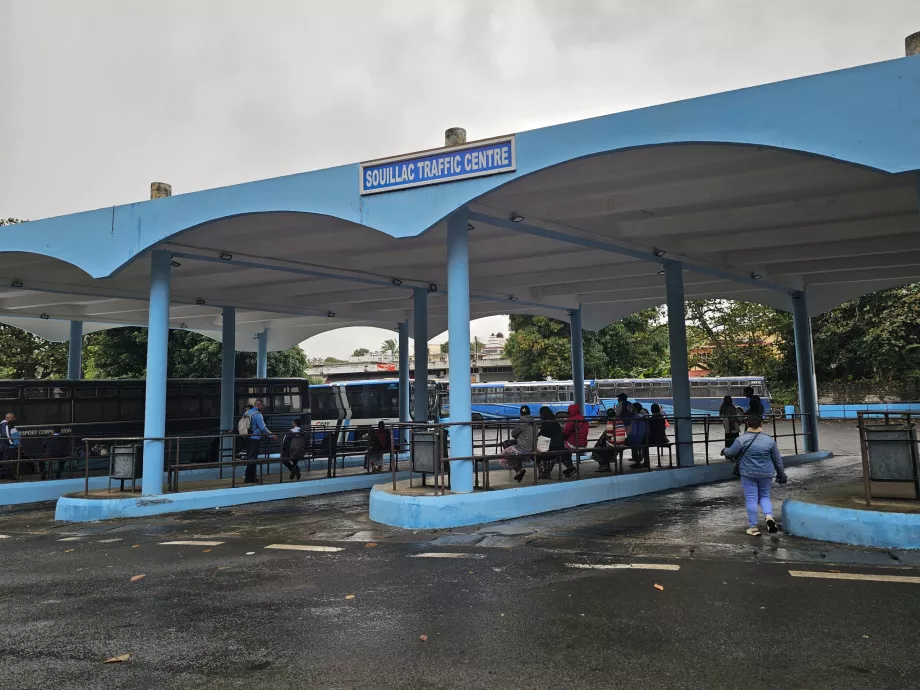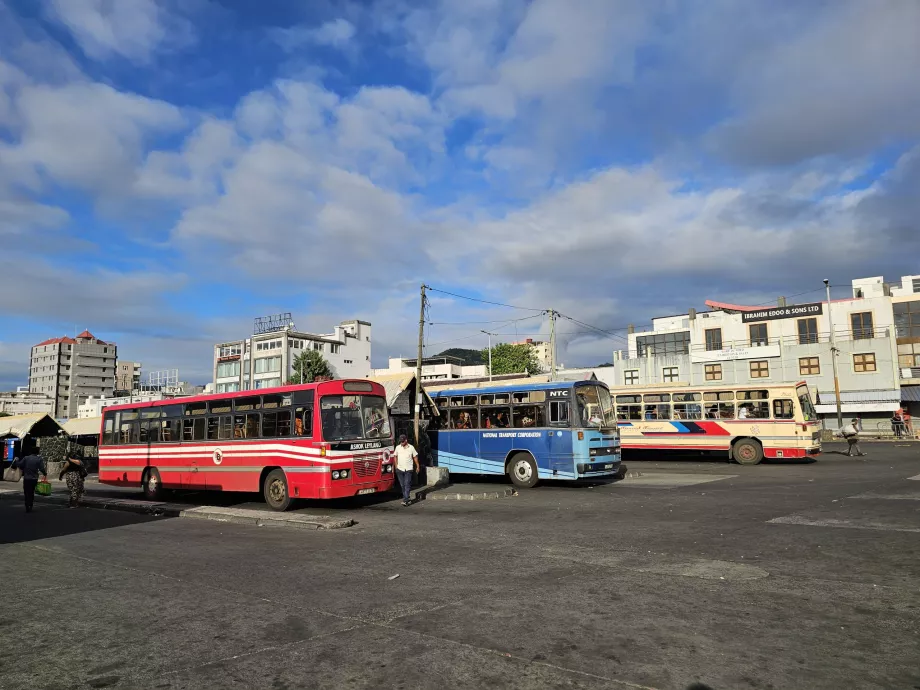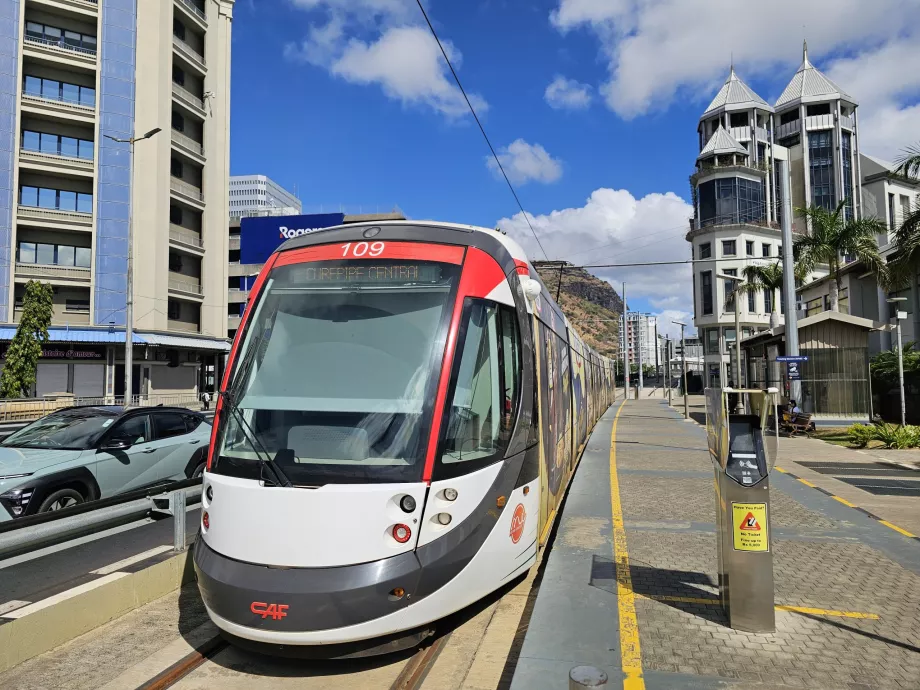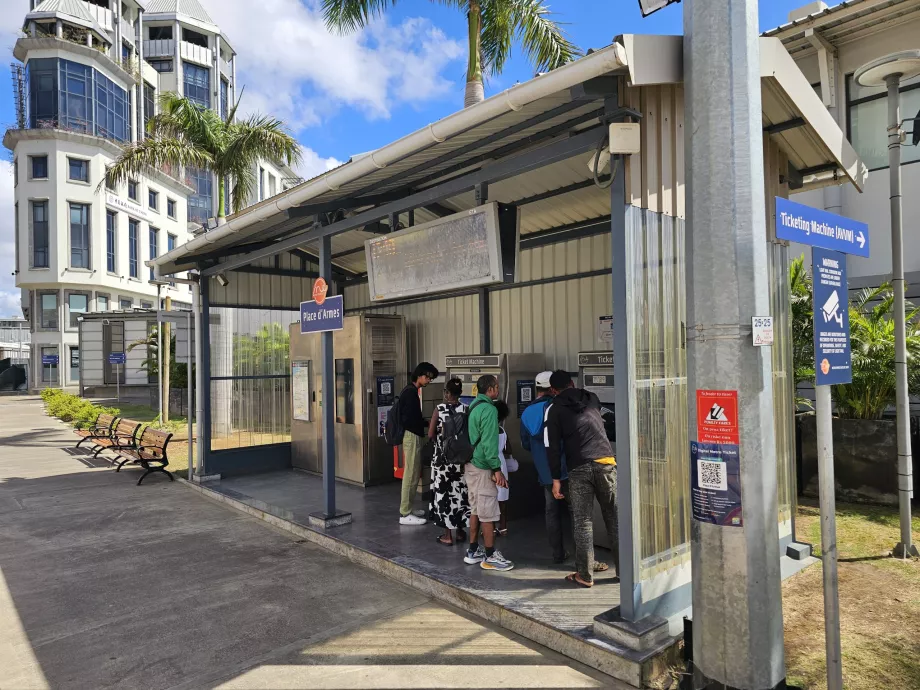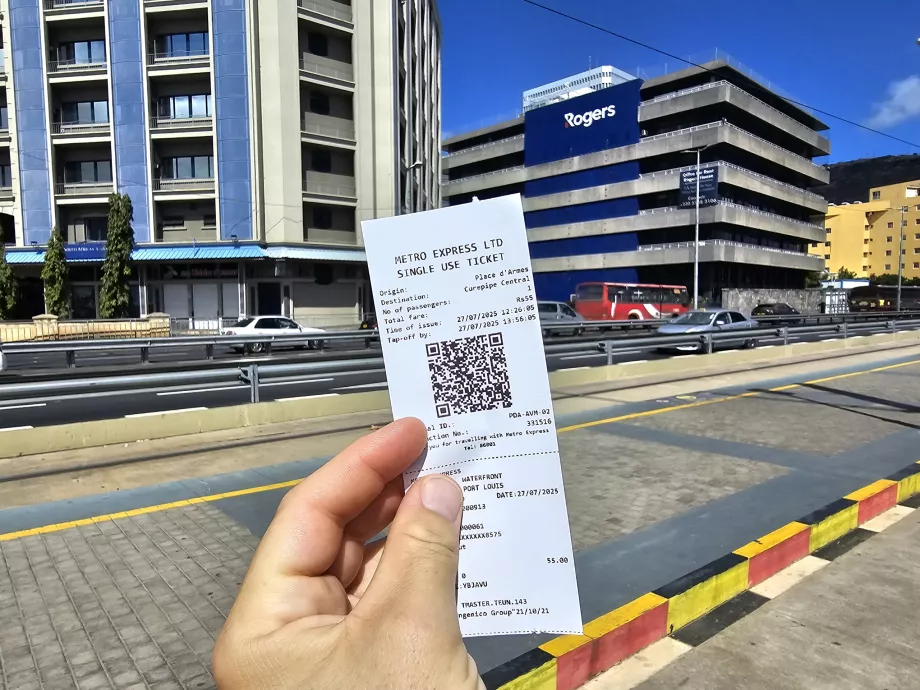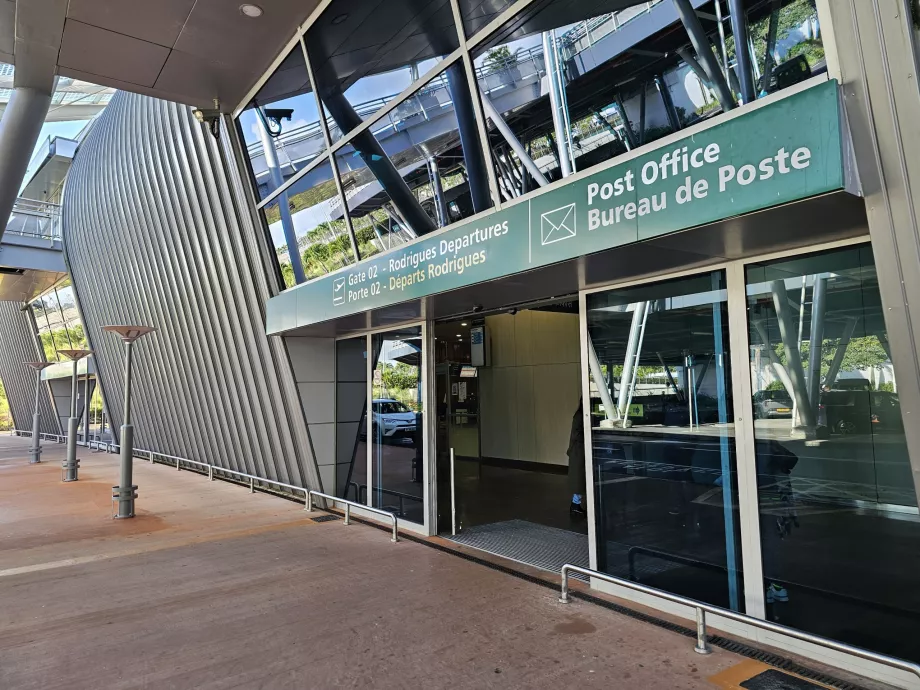Getting around Mauritius
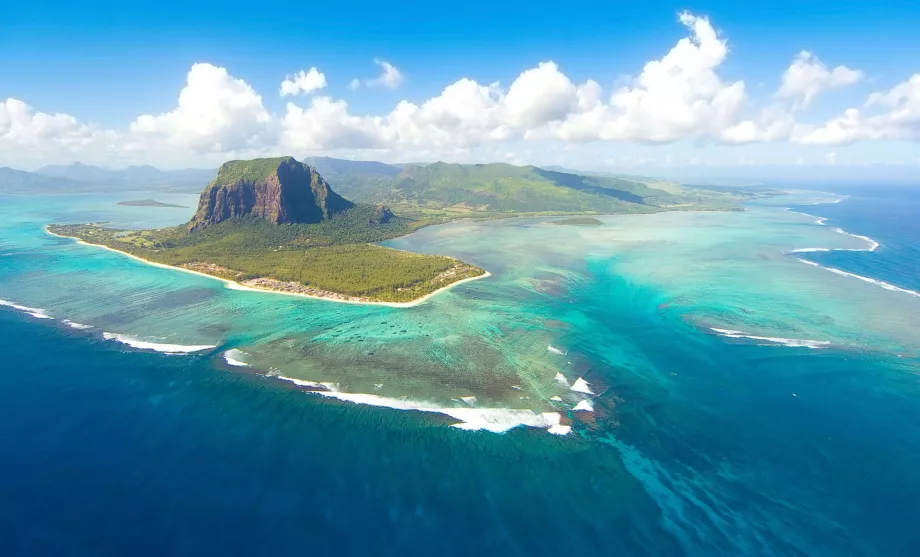
Mauritius has a dense bus network, but it is not well suited for travel to national parks and mountains.
In addition, the buses are usually quite old and very slow, but it is an option and makes it possible to get around Mauritius even if you don't want to or can't rent a car.
I've tried buses, taxis, trams and a car and personally I would definitely recommend renting a car for at least a few days.
Rent a car
As a former British colony, Mauritius is among the countries where driving is left-handed. Traffic is very heavy during the hours of 8am-10am and 5pm-6pm, as most residents are returning from work back to their homes on the Central Plateau.
As travelling by car is the most common form of transport for tourists, details of car rental companies, prices, petrol stations or traffic regulations are described in the chapter Car rental Mauritius.
It's best to avoid renting a scooter, as it doesn't cost any less than a small car and frequent showers won't make the ride any more pleasant.
Taxis and mobile apps
Taxis are ubiquitous in Mauritius, but very expensive.
Moreover, there are no taxi meters in Mauritius, but fixed prices on specific routes. These are sometimes displayed on a board at the main taxi ranks in the larger towns, but more often than not you won't find any information on fixed prices anywhere.
Generally you just have to negotiate the price, which you often can't do. Taxi drivers have negotiated prices and will usually all offer a single price.
What are taxi prices in Mauritius?
The price varies according to the specific route and the specific taxi driver, but as a rough guide, expect the following amounts:
- a ride within one city (up to 3 km) - approx. 300 mur
- up to 5 km - approx. 350 mur
- up to 10 km - approx. 800 mur
- up to 25 km - approx. 1 300 mur
- up to 40 km - approx. 2 000 mur
- up to 55 km - approx. 2 400 mur
Please note that taxi prices from the airport are usually significantly higher than the price of taxis to the airport.
Yugo mobile app
Internationally known apps like Grab, Uber or Bolt don't work in Mauritius, but you can use the Yugo app which works on a very similar principle.
Yugo is usually a reliable app, however, driver availability can be very poor in some outlying areas and you can wait up to an hour outside of town.
When booking a ride, you can either choose a time "now" or a specific future time up to 10 days in advance.
You can pay by card, but you can also pay with cash.
You can download the Yugo app from the official website: yugo.mu.
Buses
The cheapest transport option is public bus transport. Tickets range from 12 mur to 50 mur depending on the destination and are bought directly on the bus. The bus network is dense and covers almost all populated areas of the island.
Where can't you go by bus?
However, buses don't go to the best natural attractions. These places are not easily reached by bus:
- The Seven Coloured Lands
- Le Morne Brabant
- Black River Gorges NP
- Le Morne Beach
- Ebony Forest
- The highest mountain of Mauritius
- Vallé Advenature Park
The 10 cheapest hotels in Mauritius
Timetables and stops
It should be noted that this is a very slow mode of transport, which we recommend using only rarely, and more for shorter journeys.
There are no fixed timetables. Buses run from approximately 5-6am until 6pm, after which most services do not run. The only exceptions are the very frequent routes between the largest cities, but these generally do not go to any tourist attractions.
Often the bus does not pull up to a stop, the driver just honks his horn and if you don't wave for a stop, he continues on his way.
In some places you won't find stops, you will only see the sign BUS STOP, however it is often possible to get on outside the stops if you wave to the driver.
However, in every major city you will find large bus stations where several bus lines always converge and you can change buses between them.
Frequent lines between major cities usually run once every 15 minutes, but on many routes multiple lines run together, so the interval ends up being even shorter.
Lines running along beaches and coastlines are usually lower frequency and run 1-2 times per hour.
Fares and prices
Although buses in Mauritius are operated by different companies, the way fares are paid is the same on all routes.
There is a section fare. The greater the distance you travel, the more you pay for your ticket.
When you board the bus, sit down and wait for the conductor to walk through the car and collect the money. Tell him your destination and pay.
You can only pay in cash, but you do not need to have the exact amount. The guide will normally change even on high value notes.
Prices vary slightly by carrier.
- Stage 1 (within about 2 km) - 12 mur to 17 mur
- Stage 2 (up to approx. 7 km) - 18 mur up to 24 mur
- Stage 3 + 4 (up to approx. 11 km) - 25 mur up to 30 mur
- Stage 5 + 6 (approx. up to 14 km) - 30 mur up to 35 mur
- Stage 7 + 8 (approx. up to 17 km) - 35 mur up to 39 mur
- Stage 9-12 (approx. up to 21 km) - 39 mur up to 43 mur
- Stage 13-30 (approx. up to 50 km) - 43 mur up to 47 mur
- Stage 31-39 (over 50 km) - 45 mur up to 50 mur
Line maps and exact times
There is no official website or connection finder in Mauritius, however, unofficial reliable information is provided by mauritius-buses.com.
On this site you can also look up connections between specific stops, which will give you line numbers and roughly how often they run.
You will also find other useful sites here:
Maps and line routes are not yet displayed in Google Maps or Moovit.
Book a hotel in advance at a discount
Tram / metro
A modern tram line connects the capital city of Port Louis with major inland cities such as Rose Hill, Vacoas-Phoenix and Curepipe, where many bus lines connect to the southern parts of the island.
The tram is a significantly faster and infinitely more convenient connection than buses.
It does not, however, lead to any tourist destinations and is therefore more likely to be used by locals.
Trams run at intervals of 10-12 minutes from 7:00 to 19:00.
Official website: mauritiusmetroexpress.mu.
Prices and fares
You must buy your ticket before boarding the tram at the ticket machine located at each stop.
You can pay by card or cash and prices are graduated according to distance.
The price per ride is 32 mur to 55 mur.
Transport Mauritius - Rodrigues
Mauritius has two inhabited islands - the main island (Mauritius) and Rodrigues, 600 km away.
You can use the frequent domestic air service or the slow ferry that carries cars and foot passengers.
Air transport
Flights between Mauritius MRU and Rodrigues RRG are operated by a single airline - Air Mauritius.
Flight prices are quite high and are around 200 eur for a return journey.
The airline flies on average 6-9 times a day and the flight takes 1.5 hours.
Ferry
The boat leaves from the port in the capital Port Louis and arrives in the city of Port Mathurin.
It usually sails once every 10 days and the voyage takes 40 hours.
The timetable and ticket prices cannot be found online, the official website is usually updated only once every 5 years: mauritiusshipping.net.
One-way fares are around 8 600 mur.
Any questions left?
If you have any questions or comments about the article...

